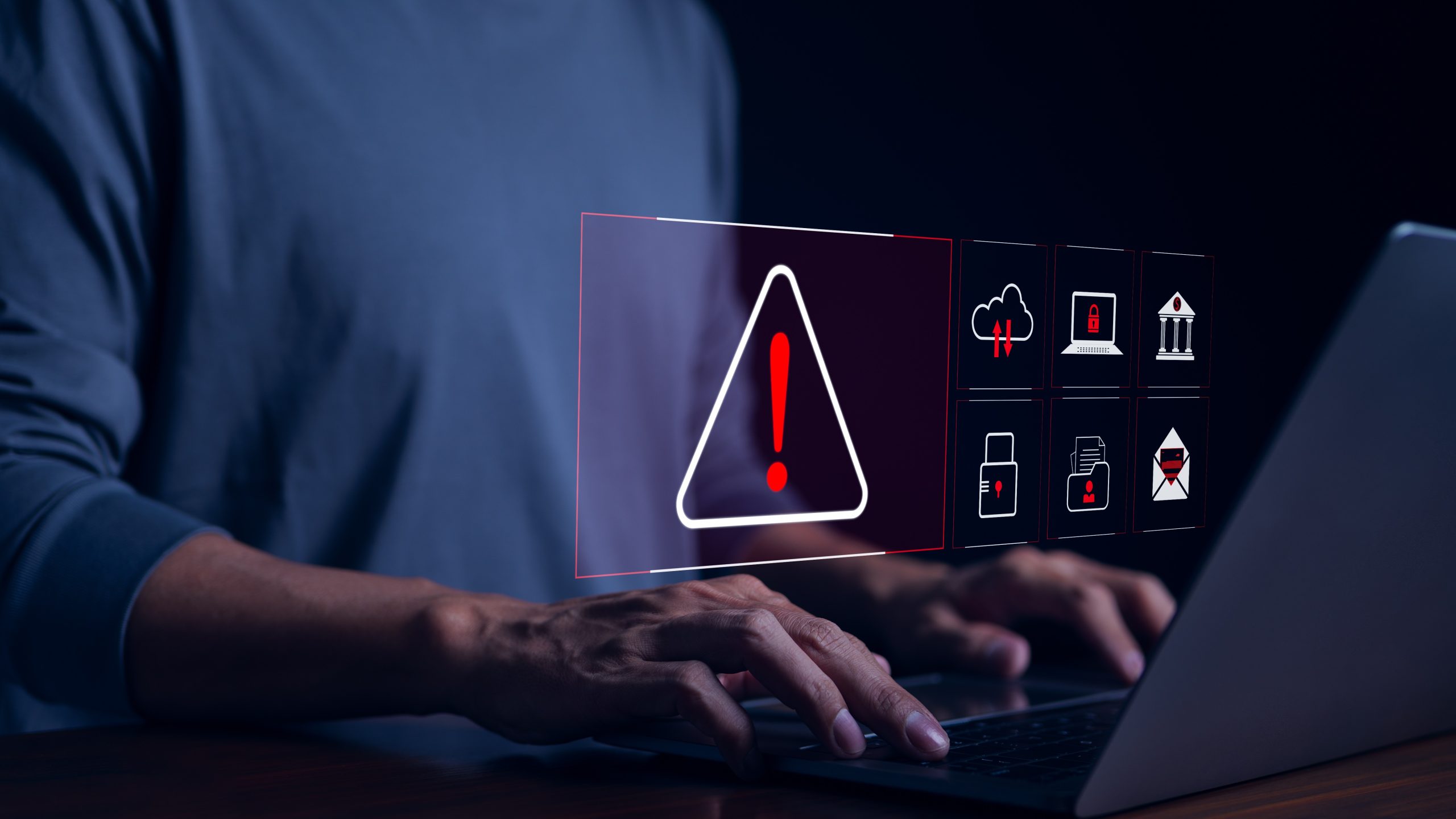In August 2024, Cloudflare faced one of the largest DDoS attacks (11.5 tbps) ever recorded. The assault could have crippled critical internet infrastructure, yet Cloudflare’s automated defence mechanisms detected and mitigated the attack in mere seconds.
This wasn’t a stroke of luck. It was preparedness in action. With Cloudflare’s well-designed Incident Response Plan (IRP) and rapid escalation procedures, the trained response team contained the incident before it could impact operations.
The lesson is simple: incidents are inevitable, but disasters are preventable – with the right plan in place.
No organisation, regardless of size or industry, is immune to cyber incidents. From data breaches to ransomware, supply-chain compromises, and insider threats; attacks are a matter of when, not if. The real difference lies in how prepared your organisation is to respond.
That’s where an Incident Response Plan (IRP) comes in.
What Is an IT Incident Response Plan (IRP)?
An Incident Response Plan is your structured framework for identifying, managing, and recovering from technology-related disruptions – from ransomware and insider threats to outages and supply-chain compromises.
A strong IRP helps your organisation:




Respond swiftly and confidently under pressure.
Minimise downtime, financial loss, and harm to reputation.
Maintain compliance with UK data protection laws (GDPR, NIS Regulations).
Protect stakeholder trust and business continuity.
Think of it as your digital fire-safety plan – the playbook that ensures everyone knows what to do when alarms go off.
The 5 Must-Haves for a Resilient Incident Response Plan
Below are the five key building blocks of a mature IRP with actionable steps you can implement immediately.
1. Defined Roles & Responsibilities
When an incident hits, there’s no time to figure out “who does what.” The faster you mobilise the right people the less damage you will suffer.
- Form a cross-functional Incident Response Team (IRT) with designated roles – Incident Lead, Technical Lead, Legal Liaison, and Communications Manager.
- Maintain up-to-date contact lists for internal teams, vendors, and regulators.
- Develop a RACI matrix (Responsible, Accountable, Consulted, Informed) for different incident categories.
- Conduct simulation exercises twice a year to validate readiness and coordination.
2. Early Detection & Continuous Monitoring
If you don’t detect the incident early, your response is delayed and the cost rises.
- Deploy systems to monitor security data across your IT environment, such as SIEM (Security and Information and Event Management) and IDS (Intrusion Detection System) to catch anomalies in real time. (Read about 3BDS’s AI assisted SIEM for advanced threat intelligence.)
- Set escalation thresholds and automated response triggers.
- Integrate threat intelligence feeds for proactive awareness.
- Regularly audit your detection systems and review system logs for unusual activity.
3. Incident Classification & Prioritisation
Not all incidents are equal. Some are minor; others are catastrophic. You need to prioritise to allocate your resources effectively.
- Establish severity tiers (Low → Critical) based on business impact.
- Define response time objectives for each tier, e.g., critical events must initiate a response within 15 minutes.
- Link classification to escalation levels and executive involvement.
- Periodically review and adjust based on lessons learned from prior incidents.
4. Clear Communication Channels
In an incident you will need to coordinate among technical teams, business leadership, customers, regulators, and the public. Poor communication creates confusion, missed obligations (e.g., breach notification laws) and reputational harm.
- Prepare pre-approved communication templates for internal updates, regulatory notifications, and customer messages.
- Ensure clarity around who can authorise external statements.
- Maintain direct contact points with the Information Commissioner’s Office (ICO) and the National Cyber Security Centre (NCSC).
- Run crisis communication drills simulating both internal and external scenarios.
5. Recovery & Continuous Improvement
The goal is not just to stop the incident, but to restore normal operations and learn to become stronger afterward. An IRP without recovery & review is incomplete.
- Define Recovery Time Objectives (RTOs) and Recovery Point Objectives (RPOs) for critical systems.
- Verify backup integrity and restoration processes through testing.
- Conduct post-incident reviews and document findings in a centralised incident register.
- Update your IRP based on evolving threats and technology trends.
Why IRP Matters in a Changing Technology Landscape
Today’s digital environment is transforming rapidly and so are the threats.
- AI-driven attacks: Cybercriminals now use AI to automate phishing, craft deepfakes, and bypass security controls at scale.
- Quantum computing threats: With quantum capabilities accelerating, current cryptographic standards — including widely used algorithms like RSA — are already being challenged. Organisations must act now to adopt quantum-resilient encryption and incident response strategies before these defences become obsolete.
- Regulatory momentum: UK and EU authorities are tightening obligations for breach detection, notification, and preparedness.
In this evolving landscape, incident response can no longer be reactive. It must be intelligent, data-driven, and adaptive.
That’s why forward-looking organisations are investing in Digital Forensics and Incident Response (DFIR), combining rapid containment with deep investigation and evidence-based remediation. DFIR capabilities not only help resolve incidents faster but also uncover the root cause, strengthen future defences, and ensure compliance with legal and regulatory requirements.
A modern IRP integrates AI-based monitoring, automated playbooks, DFIR expertise, and continuous learning, keeping your organisation one step ahead of its adversaries.
3BDS’s Incident Response Retainers
At 3B Data Security, we understand that even the best defences can’t stop every threat. But a fast, expert response can make all the difference.
Our Incident Response Retainers (IRRs) give UK businesses immediate access to a dedicated cybersecurity response team 24/7, 365 days a year.
What’s Included in a 3BDS IRR:
| Guaranteed rapid response: | Pre-agreed SLAs for critical incidents. |
| Dedicated UK-based response team: | Experienced analysts, forensic specialists, and crisis communicators. |
| Proactive readiness services: | Table-top exercises, threat simulations, and playbook development. |
| Digital forensics & post-incident analysis: | Identify root causes, contain threats, and support legal or regulatory processes. |
| Strategic advisory: | Ongoing recommendations to improve defences and align with ISO 27035 / NCSC best practices. |
With a 3BDS Incident Response Retainer, your organisation gets peace of mind, priority response, and expert guidance when every second counts.
Where to Get Help
Here are trusted resources to guide your organisation’s cyber-resilience journey:
- NCSC Incident Management Guidance (UK)
- CERT-UK / NCSC Cyber Incident Response Guidelines
- ISO/IEC 27035 – Information Security Incident Management Standard
- Cloudflare: Defending Against an 11.5 Tbps DDoS Attack
- 3B Data Security Cybersecurity & Resilience Services
Brief look into the 5 must haves for creating IT Incident Response Plan for your organisation:
Final Thought
Cyber incidents are inevitable but with a tested Incident Response Plan and the right experts on standby, you can transform chaos into control.
Cloudflare’s success against the record-breaking DDoS attack proves that preparedness isn’t just a safeguard. It’s a competitive advantage.
Let 3B Data Security help your organisation build, test, and sustain the resilience needed to thrive in today’s fast-moving digital world.






